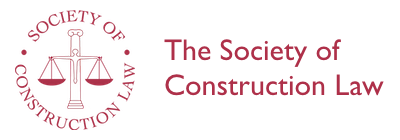Abnormally Low Tenders in Public Sector Procurement
James Golden
January 2013
A paper presented to the Society of Construction Law at a meeting in Belfast on 30th August 2012
In the context of the highly regulated world of public sector procurement, James Golden's paper examines the factors surrounding abnormally low tenders (or ALTs) and scope how they might be dealt with more consistently within the present legal framework. The two main issues are: what does an 'abnormally low tender' mean in law? And how should a Contracting Authority deal with such a tender, if its suspicions are raised? He examines the causes and issues associated with ALTs in the construction industry to try to identify a rationale for rejection. He then reviews the relevant law in the UK and Ireland, the causes and effects of ALTs and concludes with some suggestions on how difficulties with ALTs may be overcome.
Introduction - Abnormally low tenders? - How do abnormally low tenders arise? - Errors by tenderer - Deliberate under-pricing - Differing views of risk - Problems with tender documents - Genuinely better service - Reasons for ALTs: conclusion - Why are abnormally low tenders a problem? - Project-specific reasons - Project risk - The law on ALTs - The Procurement Regulations - Residual common law constraints - Judicial observations on rejection of ALTs - Conclusions from the law - What to do with abnormally low tenders? - Parameters for exclusion - Reasons for identifying ALTs - Process for investigating an identified ALT - Explaining that process - Conclusions - Issues - Being transparent and proportionalte - Obtaining sufficient evidence - Accepting an ALT - Conclusion.
The author: James Golden BEng LLB CEng FICE MCIArb FInstCES MRICS is a director of Quigg Golden Ltd.
Text 21 pages
